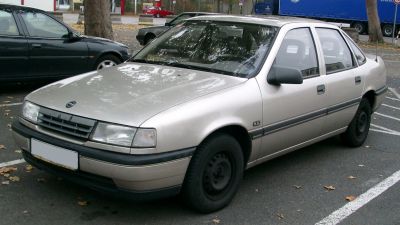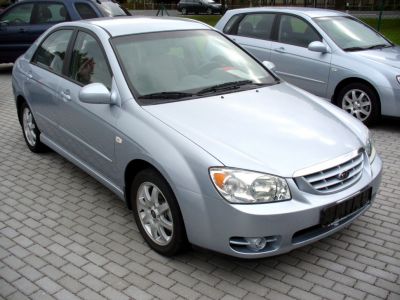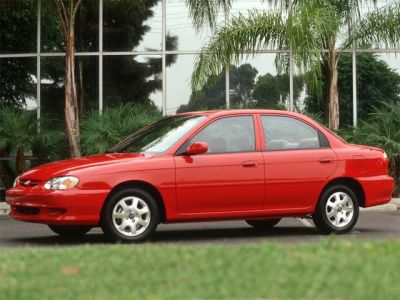 1983 Toyota Camry I (V10) Dimensions, Size & Specs
1983 Toyota Camry I (V10) Dimensions, Size & Specs
Measurements of the 1983 Toyota Camry I, engineered for optimal performance and comfort
| Dimensions | |
|---|---|
| Length: | 4435-4460 mm174.6-175.6 in14.6-14.6 ft |
| Width: | 1690 mm66.5 in5.5 ft |
| Height: | 1369-1395 mm53.9-54.9 in4.5-4.6 ft |
| Ground Clearance: | 140 mm5.5 in0.5 ft |
| Weight Specifications | |
| Curb Weight: | 1045-1188 kg2304-2619 lbs |
| Maximal permitted Weight: | 1575 kg3472 lbs |
| Roof Load: | 100 kg220 lbs |
| Tire Specifications | |
| Rims Sizes: | 13-inch rims:
|
| Tire Size: |
|
The Toyota Camry I (V10), produced from 1982 to 1988, marked the introduction of the Camry model line and established its reputation as a reliable mid-sized sedan. This first-generation Camry sedan sports a length ranging between 4435 mm (174.6 inches) and 4460 mm (175.6 inches), making it compact enough for comfortable urban maneuvering while still providing a spacious interior for passengers. Its width varies slightly from 1689 mm (66.5 inches) to 1690 mm (66.5 inches), contributing to its stable stance on the road. The height of the vehicle ranges from 1369 mm (53.9 inches) to 1395 mm (54.9 inches), giving it a sleek yet practical profile.
Weighing between 1045 kg (2305 lbs) and 1188 kg (2620 lbs) curb weight, depending on configuration, the Camry I offers a balanced structure contributing to both fuel efficiency and driving comfort. The vehicle's maximum permissible weight is 1575 kg (3472 lbs), accommodating passengers and cargo without compromising safety or handling. Ground clearance is measured at 140 mm (5.5 inches), suitable for both city roads and mild off-road conditions.
This generation rides on 13-inch rims with a size of 5.0J x 13, fitted with 185/70 R13 tires, which provide a good mix of comfort and road grip. The roof load capacity is 100 kg (220 lbs), facilitating additional cargo such as rooftop carriers when necessary. Overall, the Toyota Camry I (V10) from 1983 offers a balanced combination of compact exterior dimensions and practical interior space, making it an attractive choice for drivers seeking a dependable and efficient sedan.
Discover the standout features that make the 1983 Toyota Camry I a leader in its class
Have a question? Please check our knowledgebase first.
The Toyota Camry I (V10), produced from 1982 to 1988, has an exterior length that ranges between 4435 mm and 4460 mm (174.6 to 175.6 inches). Its width is consistent around 1689 mm to 1690 mm (66.5 to 66.5 inches). The height varies between 1369 mm and 1395 mm (53.9 to 54.9 inches). These dimensions reflect the modest yet practical size of the early Toyota Camry, designed to offer a comfortable midsize sedan experience during the 1980s.
The curb weight of the Toyota Camry I (V10) ranges from 1045 kg to 1188 kg (2304 to 2620 lbs), while its maximum weight capacity is approximately 1575 kg (3471 lbs). This relatively lightweight profile for a midsize sedan helps the car achieve balanced performance and decent fuel economy, especially considering the technology of the 1980s. The lighter curb weight contributes to more responsive handling and lower fuel consumption compared to heavier vehicles of its class at the time, making it an efficient option in its segment.
The Toyota Camry I (V10) has a ground clearance of 140 mm (5.5 inches), which is fairly standard for sedans of its class and era. This ride height strikes a balance between ease of entry, aerodynamic efficiency, and the ability to handle typical road conditions without scraping the underbody. While the clearance is sufficient for urban and highway driving, it might be less ideal on uneven or rugged terrain where higher ground clearance could be necessary.
The 1983 Toyota Camry I (V10) commonly uses 13-inch rims, specifically sized at 5.0J x 13, paired with tires sized 185/70 R13. These specifications support balanced road grip and ride comfort for the sedan’s class. The narrower and smaller diameter tires compared to modern standards reflect the design priorities of the era, emphasizing fuel efficiency and smooth handling rather than outright sporty performance.
Yes, the Toyota Camry I (V10) fits comfortably into a standard home garage. With a maximum length of about 4460 mm (175.6 inches) and a width of approximately 1690 mm (66.5 inches), it fits easily within typical garage dimensions that commonly measure around 2440 mm (8 feet) wide and 4877 mm (16 feet) long. The relatively compact size for a midsize sedan ensures that parking and storing the vehicle in residential garages is convenient without requiring special accommodations.
The 1983 Toyota Camry I (V10) offers a solid interior space for its time, comfortably seating up to five passengers with adequate headroom and legroom within a compact midsize sedan footprint. Compared to modern midsize sedans, the Camry I's interior dimensions and ergonomics may feel somewhat dated due to advances in design and safety that influence cabin packaging today. However, its relatively modest dimensions still provide a comfortable ride for both driver and passengers during daily commutes or longer journeys, emphasizing practicality and simplicity.
The Toyota Camry I (V10) was the first generation of the Camry line, effectively replacing the larger and less modern Toyota Corona in the midsize segment. Compared to the Corona, the Camry I (V10) offers a more compact yet efficient design, with slightly reduced exterior dimensions to enhance fuel economy and urban drivability. Its dimensions are smaller than many predecessor mid-sized sedans, marking a shift toward a more modern, aerodynamic sedan that maximized interior space relative to its exterior size.
In comparison to other midsize sedans of the early 1980s, such as the Honda Accord, Nissan Bluebird, and Ford Sierra, the Toyota Camry I (V10) fits within a similar size range but emphasizes a slightly more compact and aerodynamic body. With a length just shy of 4.46 meters (14.6 feet) and a width under 1.7 meters (5.6 feet), it is competitive in terms of exterior size but often praised for its efficient use of space and reliability. This generation of Camry helped define the midsize sedan category in Japan and globally by balancing size, fuel economy, and comfort effectively.
The 1983 Toyota Camry I (V10) has a roof load capacity of 100 kg (220 lbs). This allows the vehicle to safely carry roof-mounted accessories such as luggage racks, roof boxes, or bicycle carriers without risking damage to the roof or compromising vehicle stability. It's important to not exceed this weight limit to maintain safe handling and structural integrity. This capacity is fairly standard for sedans of this type and era, enabling extended cargo versatility for outdoor or travel activities.
The 1983 Toyota Camry I (V10) features a practical trunk space typical of midsize sedans from the early 1980s, sufficient for daily shopping, luggage, and reasonable cargo loads. While exact trunk volume data is not always specified for this generation, the Camry was known for its user-friendly trunk design with a wide opening and a flat load floor that facilitates easy loading and unloading. The rear seats are also foldable in many trims, allowing for greater cargo flexibility when needed, making it practical for family and commuting needs.
Discover similar sized cars.

| Production: | 2019-present |
|---|---|
| Model Year: | 2020 |
| Length: | 4495 mm177.0 in |
| Width: | 1740 mm68.5 in |
| Height: | 1460 mm57.5 in |

| Production: | 2022-present |
|---|---|
| Model Year: | 2023 |
| Length: | 4496 mm177.0 in |
| Width: | 1740 mm68.5 in |
| Height: | 1455 mm57.3 in |

| Production: | 2019-2022 |
|---|---|
| Model Year: | 2020 |
| Length: | 4496 mm177.0 in |
| Width: | 1740 mm68.5 in |
| Height: | 1455 mm57.3 in |

| Production: | 1992-1995 |
|---|---|
| Model Year: | 1992 |
| Length: | 4432 mm174.5 in |
| Width: | 1706 mm67.2 in |
| Height: | 1400 mm55.1 in |

| Production: | 1988-1992 |
|---|---|
| Model Year: | 1988 |
| Length: | 4432 mm174.5 in |
| Width: | 1706 mm67.2 in |
| Height: | 1400 mm55.1 in |

| Production: | 2004-2006 |
|---|---|
| Model Year: | 2004 |
| Length: | 4480 mm176.4 in |
| Width: | 1735 mm68.3 in |
| Height: | 1470 mm57.9 in |

| Production: | 1986-1996 |
|---|---|
| Model Year: | 1987 |
| Length: | 4430-4480 mm174.4-176.4 in |
| Width: | 1705 mm67.1 in |
| Height: | 1405 mm55.3 in |

| Production: | 1998-2003 |
|---|---|
| Model Year: | 1998 |
| Length: | 4427-4510 mm174.3-177.6 in |
| Width: | 1711-1720 mm67.4-67.7 in |
| Height: | 1415 mm55.7 in |
